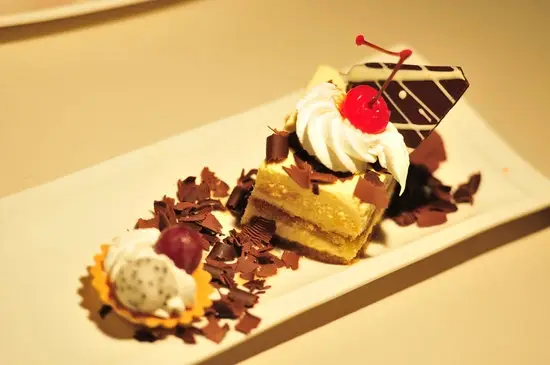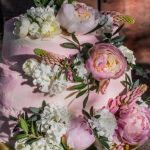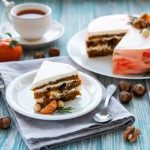When it comes to cake decorating, the right icing plays a crucial role in not only enhancing the appearance of your creation but also in determining its overall taste and texture. The question of what icing is best for cake decorating is a common dilemma that many bakers and pastry enthusiasts face.
With a variety of options available, each offering unique characteristics and benefits, it’s important to understand the different types of icings and their suitability for various decorating techniques.
The choice of icing can greatly impact the final look and feel of your cake, as well as influence how easy or challenging it may be to work with during the decorating process. From classic buttercream to elegant fondant, each type of icing brings its own set of qualities to the table. Factors such as texture, flavor, versatility, and stability all play a significant role in determining which icing is best suited for your specific cake decorating needs.
In this article, we will delve into the world of cake decorating icings, exploring popular choices like buttercream, royal icing, fondant, cream cheese frosting, ganache, and whipped cream. By understanding the key features and uses of each type of icing, you’ll be better equipped to make an informed decision when selecting the best option for your next baking project.
So whether you’re aiming for a smooth finish with intricate designs or prioritizing flavor alongside decoration, read on to discover which icing is perfect for bringing your cake creations to life.
Buttercream Icing
One of the key advantages of buttercream icing is its ability to hold its shape well, making it perfect for piping borders, flowers, and other detailed decorations. Its smooth consistency allows for clean lines and precise designs, whether you’re using a piping bag or spatula to decorate your cake.
Buttercream can also be easily colored with gel food coloring to achieve vibrant hues for themed cakes or special occasions. Additionally, this type of icing is quick to make and has a deliciously sweet flavor that pairs well with various cake flavors.
When considering what icing is best for cake decorating, buttercream remains a popular choice among both beginner bakers and seasoned professionals. Its adaptability makes it suitable for everything from casual celebrations to formal events.
Whether you prefer a traditional American buttercream made with powdered sugar or a silky Swiss meringue buttercream prepared with egg whites, there is a buttercream recipe out there to suit your taste preferences and decorating needs. Overall, buttercream icing continues to be a go-to option for those looking to add both flavor and flair to their cakes.
Royal Icing
However, while the hardening property of royal icing can be advantageous for certain decorating techniques, it can also pose some challenges. The quick setting time of royal icing means that decorators must work efficiently and accurately when using this type of icing to avoid any mistakes or inconsistencies in their designs. Additionally, the rigid nature of hardened royal icing can sometimes make it difficult to cut through when serving the cake, which may not be ideal for all occasions.
Despite some drawbacks, royal icing remains a versatile choice for decorators looking to create elaborate and detailed designs on their cakes. From lace patterns and piped flowers to intricate borders and lettering, royal icing offers endless possibilities for customization and personalization.
Whether used on its own or in combination with other types of icing, royal icing can elevate the appearance of a cake and leave a lasting impression on guests. When considering what icing is best for cake decorating, royal icing certainly holds its own among other contenders with its unique capabilities and stunning results.
Fondant
One of the key advantages of fondant is its ability to hold its shape well, making it ideal for creating three-dimensional decorations on cakes. Whether you’re looking to make a realistic sugar flower or sculpt a miniature cake topper, fondant allows you to bring your creative visions to life with precision and ease. Additionally, fondant can be tinted with food coloring to achieve custom shades and hues, giving decorators endless possibilities for customization.
In terms of taste, fondant has a mild sweetness that complements the flavor of the cake without overwhelming it. The smooth texture of fondant also adds a pleasant mouthfeel to each bite.
While some may find fondant too sweet or prefer the taste of buttercream or cream cheese frosting, its versatility in design and professional finish make it a top choice for special occasions like weddings, birthdays, and other celebrations where presentation is key. So when considering what icing is best for cake decorating, fondant definitely stands out as an excellent option for creating stunning edible works of art.
Cream Cheese Frosting
One of the key benefits of cream cheese frosting is its versatility in both flavor and decoration. It can be easily flavored with extracts, zests, or even jams to create different variations such as lemon cream cheese frosting or strawberry cream cheese frosting.
In terms of decoration, this icing can be piped into beautiful designs using pastry bags and tips, adding an elegant touch to cakes, cupcakes, or cookies. Its creamy consistency allows for smooth finishes on cakes or intricate piping for decorative accents.
When considering what icing is best for cake decorating, cream cheese frosting is an excellent choice for those who enjoy a balance between sweet and tangy flavors. Its luxurious texture and rich taste make it a standout option for carrot cakes, red velvet cakes, or even classic vanilla cakes.
Whether used as a filling between cake layers or as a top layer covering the entire cake, cream cheese frosting offers both visual appeal and delectable taste that will leave your guests wanting more.
| Category | Cream Cheese Frosting |
|---|---|
| Flavor | Rich and tangy |
| Versatility | Can be flavored in various ways |
| Decoration | Piped into beautiful designs |
Ganache
When using ganache for cake decorating, it is important to consider the ratio of chocolate to cream to achieve the desired consistency. A higher ratio of chocolate will result in a firmer ganache, ideal for creating sharp edges or sculpting intricate designs. On the other hand, a lower ratio will yield a softer ganache that can be poured over cakes for a smooth finish or whipped into a fluffy frosting.
One of the advantages of ganache is its versatility in terms of flavor customization. By using different types of chocolate – from dark and semi-sweet to white and milk chocolate – you can tailor the taste of the ganache to complement the flavors of your cake.
Additionally, adding liqueurs, extracts, or spices can further enhance the depth of flavor and create unique combinations that suit your preferences. Ganache is truly a versatile icing that allows for creativity in both taste and design when decorating cakes.
- Ganache is known for its luxurious appearance
- The rich flavor and velvety texture add an elegant touch to cakes
- Versatile in terms of consistency, it can be used for filling, covering, or even piping on decorations
Whipped Cream
Texture and Flavor
One of the main attractions of whipped cream icing is its texture. When whipped correctly, heavy cream transforms into a cloud-like topping that melts in your mouth with each bite. The subtle sweetness from the added sugar enhances the natural flavor of the cream without overpowering the taste of the cake. This makes whipped cream icing an ideal choice for desserts where you want a lighter touch compared to richer buttercream or ganache.
Limitations in Stability
While whipped cream icing has its merits, it also comes with limitations when it comes to decorating elaborate cakes. Due to its high moisture content and airy structure, whipped cream can be less stable than other types of icings when used to create intricate designs or decorations on cakes.
It may not hold up well under warm temperatures or over extended periods, making it challenging to work with for detailed piping work or sculpted elements on cakes that need to hold their shape for an extended period of time.
Despite its limitations in stability, whipped cream icing remains a favorite choice for those seeking a light and fresh finish to their cakes. Whether used as a simple topping or incorporated into more elaborate designs with careful handling and consideration of temperature control, whipped cream adds a delightful touch to any confectionery creation. Ultimately, the choice of icing depends on personal preferences and the desired outcome for your cake decorating project.
Comparing the Icings
When it comes to cake decorating, the type of icing used can make a significant difference in the overall outcome. Each icing has its unique properties that cater to different tastes and preferences. Let’s compare the different types of icings discussed in this article: buttercream, royal icing, fondant, cream cheese frosting, ganache, and whipped cream.
To better understand the differences between these icings, let’s break down their characteristics:
- Buttercream Icing: Known for its creamy texture and versatility, buttercream is a classic choice for cake decorating. It is easy to work with and can be used for various techniques such as piping borders or creating intricate designs.
- Royal Icing: Ideal for detailed designs that need to harden, royal icing sets firm and makes it suitable for intricate decorations like lacework or delicate flowers. However, it tends to dry out quickly and may not be the best option for cake fillings.
- Fondant: With its smooth finish and ability to hold elaborate designs, fondant is favored by many professional bakers for creating custom cakes. While it provides a clean canvas for decoration, some find its taste overly sweet.
Moving on to the next set of icings:
- Cream Cheese Frosting: Offering a rich and tangy flavor profile, cream cheese frosting is a popular choice not only for its taste but also for its decorative possibilities. It pairs well with carrot or red velvet cakes and adds a luxurious touch to any dessert.
- Ganache: Boasting a luscious appearance and silky texture, ganache is often used for filling layers or covering cakes due to its decadent taste. Its glossy finish adds an elegant touch to cakes but may require proper temperature control during application.
- Whipped Cream: Light and airy in texture, whipped cream icing provides a refreshing alternative to denser frostings. While perfect for lighter cakes or summer desserts, whipped cream may not hold up well in warm temperatures or intricate designs.
By understanding the strengths and limitations of each type of icing, you can choose the best option based on your preferences and cake decorating needs. Whether you prioritize taste, texture, or ease of use, there is always an ideal icing that will elevate your creations to new heights. Experimenting with different icings can also help you discover new techniques and styles that suit your personal baking style best.
Conclusion
In conclusion, when it comes to choosing the best icing for cake decorating, there are several factors to consider. Each type of icing – from the classic buttercream to the elegant fondant, the versatile royal icing to the rich cream cheese frosting, and the luxurious ganache to the light whipped cream – offers unique qualities and benefits. The decision on which icing to use ultimately depends on individual preferences, needs, and the specific requirements of the cake design.
For those looking for a versatile option that is easy to work with and can be used for various decorating techniques, buttercream icing is a classic choice. Its smooth texture and ability to hold intricate designs make it a popular option for both beginners and experienced decorators alike. On the other hand, royal icing offers a more firm consistency that hardens once dried, making it ideal for creating elaborate decorations that require stability.
If you prefer a sleek and professional finish with the ability to create elaborate designs, fondant may be the best choice. Its smooth surface provides a blank canvas for creativity, allowing decorators to craft intricate details with ease.
For those who value both flavor and decoration in their icing, cream cheese frosting offers a rich and tangy taste that can complement various cake flavors while adding a decorative touch. Ultimately, each type of icing has its own advantages and limitations, so considering your preferences and needs will help you choose the best option for your next cake decorating project.
Frequently Asked Questions
What Frosting Do Professionals Use?
Professionals typically use buttercream frosting for decorating cakes. Buttercream is versatile, easy to work with, and provides a smooth finish on cakes. It also holds its shape well, making it ideal for intricate designs.
What Type of Icing Is Best for Decorating a Cake?
The best type of icing for decorating a cake depends on the desired outcome. Royal icing is excellent for intricate piping work and creating decorations that need to set and harden. On the other hand, fondant is perfect for creating a smooth and flawless finish on cakes, making it ideal for special occasions like weddings.
Is Frosting or Buttercream Better for Cake Decorating?
When it comes to cake decorating, both frosting and buttercream have their advantages. Frosting tends to be lighter and fluffier, which makes it easier to spread evenly over cakes.
On the other hand, buttercream holds its shape better and is great for creating intricate designs or decorations that need to hold up well in various conditions such as heat. Ultimately, the choice between frosting and buttercream depends on personal preference and the specific requirements of the cake design.

Welcome to our cake decorating blog! My name is Destiny Flores, and I am the proud owner of a cake decorating business named Cake Karma. Our mission is to provide delicious, beautiful cakes for all occasions. We specialize in creating custom cakes that are tailored specifically to each customer’s individual needs and tastes.





